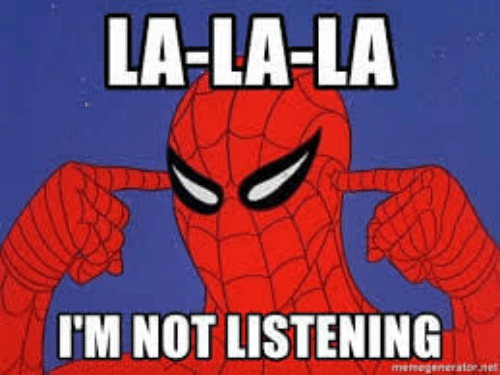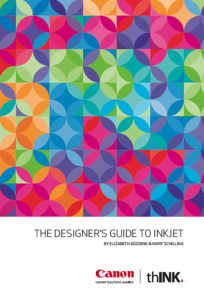By Mike Todryk
There is a scene at the beginning of Avengers: Endgame when the team is discussing what went wrong. The gist of the conversation is they wasted too much time fighting each other instead of working together toward their common goal.

This is unfortunately something that has played out throughout history. Everybody thinks they are right and nobody listens.
What does this have to do with inkjet? Design and production personnel often seem like they are playing for opposite teams, instead of working together―like one is speaking ancient Latin and the other ancient Greek. How do we bridge this gap?
 While a number of books and articles have been written by people with far more insight than myself on this subject (“The Designer’s Guide to Inkjet,” available on thinkforum.com), I would like to offer up a couple of thoughts on the subject. (Please note, these thoughts are from the production perspective. I know just enough about designing to be dangerous.)
While a number of books and articles have been written by people with far more insight than myself on this subject (“The Designer’s Guide to Inkjet,” available on thinkforum.com), I would like to offer up a couple of thoughts on the subject. (Please note, these thoughts are from the production perspective. I know just enough about designing to be dangerous.)
Some of these ideas might even help the next time “Uncle Joe” starts opining at the holiday meal.
Listen More, Speak Less
This is one that I have had to learn the hard way (and am still learning, as my boss will tell you). At one point with a previous employer, I was known as “Dr. No,” because instead of listening carefully, I would just explain why it couldn’t be done. Anyone who has seen the video “The Expert” on YouTube (Google it!) can understand the feeling. Some requests seem impossible. Don’t people want the truth?
Most people do want the truth, but more often than that, they want to be heard. They want to feel like their opinion matters. They are trying to convey to you how they see things. They may not be wording things in a way that you immediately understand (ancient Latin and Greek, remember?). The first step is to hear them out. Which then leads us to…
Ask Questions
I had a designer at a press check one time ask me to try and make the clouds on the print more heavenly. My first thought was, “What does that even mean? Do you want them more gold, bluer, maybe angels flying around in the background?”
Rather than just shut down the conversation or to try to just guess at what was meant, I tried asking some questions, like “When you say that, what does that look like?” and “What does that mean to you?”

Original vs. Applied cloud contrast
After some listening and more questions, I was able to figure out they wanted the clouds to have more contrast with the sky. We made the adjustment and got the client what they wanted. And in the end, isn’t that the goal?
Training
One way to bridge that gap is with training. Be willing to train both internally and externally. I have found while designers may not understand that the way they are designing might be a problem for production, when shown how design impacts production, they are more than willing to adapt. IWCO Direct does training on more straightforward concepts, like how different stocks can make a big difference to more complex concepts like chromatic adaptation. Do not just complain. Invest time in developing training that addresses the issues you are seeing. Find thoughtful articles that you can share (maybe even this one). Work with both designers and your production people to bridge that gap together.
Summary
The vast majority of people want to do things right with the fewest issues possible. When communication issues do come up, listening, asking questions, and training can help to bridge that gap between designers and production and help achieve their common goal.
Mike Todryk is a Color Technical Specialist for IWCO Direct. He has more than 20 years of printing industry experience and has specialized in Color Management for the last 18.


Comments
This has always been a contentious area, see my blog on this issue:
http://www.missinghorsecons.co.uk/wordpress/2011/12/how-to-make-good-car-door-handles/
Written a few years ago!